
|
SUMMARY:
Discounting can feel like an easy fix, but frequent price cuts teach customers to wait for your next sale – and your margins take the hit. Drawing on decades of research at MarketingSherpa and parent company Meclabs, I’ve distilled a seven-step approach to build offers that convert – without ever dropping your prices. In this article, you’ll get that framework, plus real-world stories from peers who tackled the same challenge in their own inventive ways. |
Action Box: Offer-building Workflow – This multi-agent protocol workflow can do it for you
MeclabsAI can do it for you. Try the multi-agent protocol workflow How to create offers customers can't resist (MeclabsAI is MarketingSherpa’s parent company).
Customers don’t buy features. They buy peace of mind. They buy comfort. They buy their dreams, time, efficiency, lifestyle, acceptance, community, and on and on.
This is what makes marketing so powerful…and so hard.
Because it’s different for every ideal customer…and every product or service that ideal customer buys.
For example, for a recent trip I parked in the economy parking lot to save money. But I bought the extra legroom seats for my family on the flight to have a nicer experience.
I’m the same person, on the same day, on the same trip. And yet, I had different motivations. Ah humans, we are complex creatures.
So it’s not easy, but when you do effectively understand, tap into, and service your ideal customer motivations, it’s extremely powerful.
An analogy I like to use is the music video ‘No Rain’ by the band Blind Melon from the ‘90s. This girl in a honeybee outfit dances on a stage and the audience just laughs at her. She wanders around the town sad. And then, one day, she rounds the corner and sees…a whole group of people in bee costumes dancing. Bee girl had found her tribe.
The look on her face at that moment is what we’re shooting for when we try to tap into customer motivation. Here’s an example to spark your ideas for how you can learn about your own customers.
“You need clarity on what transformation you’re offering,” said Faye Casement, certified professional coach, Reflect, Grow and Heal.
To validate the outcome her ideal customer cares about most, Casement gathered feedback from past and current clients through conversation and informal reflection after sessions.
She asked what her clients are truly walking away with:
To learn from people she wasn’t working with directly, she went online. “I read through Facebook group threads, noted how people described their challenges and desires, and paid attention to the words that came up again and again. I also make use of tools like AnswerThePublic, Google and Pinterest search prompts, and AI,” Casement said.
A theme began to emerge, she noted words like ‘lighter, calmer, clearer, less heavy.’ What they were describing was emotional relief.
“When I write or speak about my work, I aim to reflect both the ache and the possibility. Not in a way that amplifies fear, but in a way that gently says, ‘I see you. And things can be different,’” she said.
Before realigning her offers, she wasn’t selling at all. Since getting clear on her value and shaping a suite of offers that reflect the value, she has seen sales come through with far greater ease and consistency.
Now that you understand their motivations, how do you tap into those motivations? With a powerful value proposition.
We’ve spilled a lot of ink on this topic at MarketingSherpa, so I won’t go too deep. To keep it simple, I’ll give you a question you can ask to make sure you’re addressing each element of the Meclabs Value Proposition Discovery framework:
Let’s take a look at how startup Syntilay addressed these elements.
First of all, the team tapped into an appealing motivation (see Step #1) – sandals that fit perfectly.
The founder of Reebok is an advisor, so that brings credibility. “Joe [Foster] has accelerated our traction because of his incredible reputation but also his willingness to get behind what we are doing,” said Ben Weiss, CEO, Syntilay.
They created something exclusive – the first AI-designed, fully 3D-printed slide sandals (I verified with MeclabsAI, and could not find another company making the same product).
Many companies struggle with exclusivity, so how was a startup able to pull this off? Through partnerships. “We work with Volumental via our partner factory Zellerfeld, which does the 3D printing, and Volumental uses a piece of paper as the data point reference to understand your environment,” Weiss told me.
Once you have exclusivity, it is important to protect it. “We have a great family law firm we work with, Weiss & Moy P.C., that does all our IP work,” he said.
And since they have a true value proposition, they are able to communicate their offering with clarity, which has allowed them to be successful in different channels. “Going on Liz Claman’s show from Fox Business was a tremendous success for us,” Weiss said.
I shared the Syntilay story because wanted to start by showing you an extreme example of what a powerful value proposition could look like. But in fairness, most companies will not have this level of exclusivity. So let’s take a look at an example that has more competition.
Saily is an eSIM. If you’re going to a country that your cell phone carrier doesn’t cover, or if you have high international roaming costs, you might buy an eSIM service.
Saily has 97 competitors (according to MeclabsAI).
When you have 97 competitors, it’s not enough to offer the service. You need to set your offer apart.
“The team that built Saily previously created NordVPN, so our expertise quickly shaped what that extra value could look like – we knew that we could once again deliver something unique in the cybersecurity field,” said Vykintas Maknickas, CEO, Saily.
The team introduced a feature that would lower users’ data usage and turned to third-party validation for credibility. “The average data savings were measured by an independent testing lab, West Coast Labs,” he said.
Following the third-party test, they launched a campaign about their technology. ‘Make your plans last longer – save 28.6% of mobile data with Saily’ and ‘Ads blocked, 28.6% data saved’ resonated strongly with prospects.
Once you’ve clarified your value proposition, it’s time to go deeper. Because it’s not just the core value you deliver and communicate as outlined in your value prop, how you deliver it significantly influences how your ideal customer perceives your offer’s value.
For example, a digital magazine and a print magazine have the same core value, but the delivery mechanism of print has a higher perceived value for many readers. That higher perceived value can come with a higher real cost, so you have to determine if the cost your company will pay is lower than the additional value your customer will perceive.
Here are some more examples:
Here’s a deeper look at an example from one of your peers.
“In my opinion, women don’t need another workbook…they need a witness,” said April Kenoly, founder and managing partner, Ten Solutions.
When she added audio clips to her email sends to deepen emotional enagement, open rates doubled.
So she decided to embed voice note guidance inside the PDFs in her new digital product bundle, as part of a narrative arc designed to mirror the buyer’s emotional transformation.
Here is the implementation workflow she used:
The bones took three days. The refinement took three weeks.
One customer said the voice notes were the part she used the most. That inspired Kenoly to trim redundant workbook sections and replace them with ‘activation scripts’ (short, spoken mantras).
This offer increased her average order value by 42% in six days. One customer told her, “This felt like therapy without the co-pay.”
Another said, “I didn’t realize I had dissociated from my own voice until I heard yours.” Referencing that feedback, Kenoly told me, “It’s why I’ll never go back to text-only delivery.”
Not all cost is monetary. Friction (difficulty in the sales process) and anxiety (concern) are other examples of cost. By reducing friction and anxiety, you could reduce ‘cost’ for the customer without have to resort to a discount.
For example, you can simplify forms, reduce steps, or clarify instructions to reduce friction. And you could add trust signals, guarantees, or social proof to lessen anxiety.
Regularly audit your customer journey to spot friction points and anxiety triggers so you can keep mental cost low for your prospects.
Incentives don't have to be financial. Consider these alternatives:
Here’s a B2B example.
Tripadvisor sells ads on its website using a self-serve ad platform powered by DanAds.
To increase the perceived value of the ads, they added Dots.eco’s environmental rewards. When advertisers purchased ads, they could choose to have a portion of their spend go to their choice of projects:
They would then see not only how many impressions their budget would deliver, but also how many trees (for example) would be planted. And their analytics dashboard showed them not just the amount of clicks their ads received, but also how many pounds of plastic had been removed thanks to their ad spend.
Creative Sample: Ad platform implementation
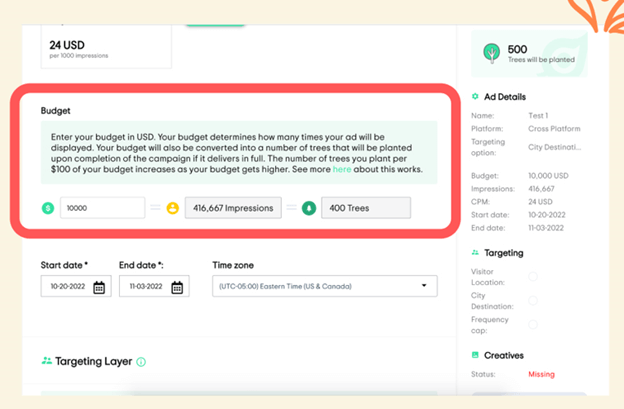
Three-quarters (77.6%) of advertisers said they felt better knowing part of their spend went toward efforts like planting trees and cleaning plastic.
The eco-rewards “have been instrumental in driving meaningful, positive changes within the Tripadvisor media business,” according to Eoin McGregor, head of Tripadvisor ad express and reseller partnerships, Tripadvisor.
Now here’s a B2C example.
Last year, the team at pampeano offered a discount for Father's Day, but it didn’t significantly drive sales. So this year for their Father's Day campaign, instead of offering a discount, the premium leather goods brand offered complimentary personalization of products.
This decision was grounded in the team’s deep understanding of its customers’ motivations (a topic discussed in Step #1 in this article) during gift-giving seasons – specifically, the desire to give something meaningful and unique.
From a value perception standpoint, getting personalization (which would have cost £8) felt more meaningful than a 10% discount on the product itself (which also equates to roughly £8 on a belt, for example).
Thanks to the incentive, the team doubled personalized product sales and saw overall sales increase in May and June compared to March and April.
“We approached personalization as an elevated service, not a promotional tactic. Rather than framing it as a cost-saving benefit, we positioned it as a complimentary finishing touch – an artisanal detail that enhances the exclusivity of the product,” said Jennifer Brown, founder, pampeano.
Every assumption is an opportunity for learning…when you approach it that way. Meclabs Scientific Messaging Hypothesis (SMH) approach can help you be mindful of the choices you’re making and then learn how to better serve your customer based on how the changes you made actually performed.
Here’s an example SMH, using the pampeano case study as inspiration:
IF we add complimentary personalization to our Father’s Day offer,
BY highlighting ‘Create a cherished keepsake’ in the hero banner,
WILL increase conversions by 20%,
BECAUSE customers value emotional connection over a price discount.
You can test more than the overall offer itself, you can test how you execute on the offer as well. Like in our next example.
Instead of discounting, the team at Birdieball used a non-monetary incentive of a VIP experience that included things like early access to new prototypes and reviews of customers’ swing videos.
“We limited the VIP group to 500 people, not to create hype, but to make the experience real,” said Katie Breaker, sales director, Birdieball.
The team tested different communication formats for their VIP group and found that live events performed better than tools or reports. “In one session where we broke down a Tour player’s training routine using our gear, nearly half the audience bought a bundle right after,” Breaker said.
But testing isn’t the only way to get feedback and optimize.
When someone leaves the VIP group, the team does not try to win them back with offers but instead asks what they felt was missing and build from there. One of their best product updates was a version for turf, and it came straight from that kind of feedback.
Once you’ve found the right offer, get it in front of the customer. Consistency builds trust. Use the same core promise on your landing page, emails, ads, and social posts.
And after they purchase as well, as discussed in our final example.
At first, users of Mindgard disengaged because onboarding was a bit clunky.
So the team simplified the process and added one-to-one onboarding. They kept track of active users by looking at who logged in, used different features, and who gave feedback.
“We tracked stronger connections by looking at their NPS scores, rates of engagement, and quality feedback,” said Fergal Glynn, chief marketing officer, Mindgard.
Turn your knowledge assets into competitive advantage
MarketingSherpa has teamed up with parent company MeclabsAI to produce a research study. We are granting ten AI engineering vouchers worth $7,500 each to eligible companies. The goal is to test this hypothesis: Companies can rapidly build and scale high-value products and solutions by properly combining AI agents with Human experts.
Conversion Rate Optimization: 7 tips to improve your ecommerce conversion rates
Heuristic Cheat Sheet: 10 methods for improving your marketing
Get Better Business Results With a Skillfully Applied Customer-first Marketing Strategy

The customer-first approach of MarketingSherpa’s agency services can help you build the most effective strategy to serve customers and improve results, and then implement it across every customer touchpoint.
Get More Info >MECLABS AI
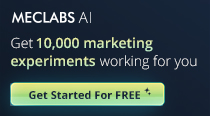
Get headlines, value prop, competitive analysis, and more.
Use the AI for FREE (for now) >Marketer Vs Machine
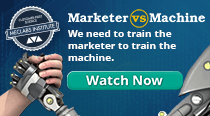
Marketer Vs Machine: We need to train the marketer to train the machine.
Watch Now >Live, Interactive Event

Join Flint McGlaughlin for Design Your Offer on May 22nd at 1 pm ET. You’ll learn proven strategies that drive real business results.
Get Your Scholarship >Free Marketing Course
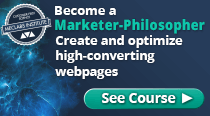
Become a Marketer-Philosopher: Create and optimize high-converting webpages (with this free online marketing course)
See Course >Project and Ideas Pitch Template

A free template to help you win approval for your proposed projects and campaigns
Get the Template >Six Quick CTA checklists

These CTA checklists are specifically designed for your team — something practical to hold up against your CTAs to help the time-pressed marketer quickly consider the customer psychology of your “asks” and how you can improve them.
Get the Checklists >Infographic: How to Create a Model of Your Customer’s Mind
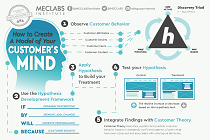
You need a repeatable methodology focused on building your organization’s customer wisdom throughout your campaigns and websites. This infographic can get you started.
Get the Infographic >Infographic: 21 Psychological Elements that Power Effective Web Design
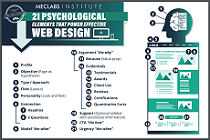
To build an effective page from scratch, you need to begin with the psychology of your customer. This infographic can get you started.
Get the Infographic >Receive the latest case studies and data on email, lead gen, and social media along with MarketingSherpa updates and promotions.